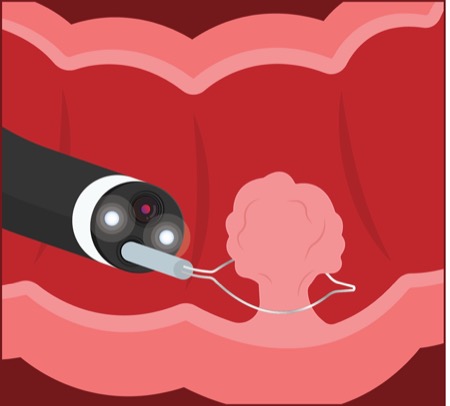SAN DIEGO—Use of cold snare to remove polyps smaller than 10 mm and possibly for larger polyps has gained support from a prospective analysis presented at DDW 2025.
The current guidelines for using cold snare to remove colorectal polyps less than 10 mm have not been updated since 2020, and within those recommendations, there is flexibility regarding whether hot or cold snare is best for removing polyps of various sizes, said investigator Neal Mahajan, a fourth-year medical student at Indiana University School of Medicine, in Indianapolis. “[Larger polyps] haven’t been investigated [for cold snare removal], and [there are] no real guidelines for them,” he added. Much of the decision still comes down to gastroenterologists' preference.
Hot snare continues to be the go-to choice for GIs for one key reason, Mr. Mahajan said. “The uptake [of cold snare] is low because the rate of immediate bleeding is higher and [it] seems to be brisker when using cold snare for lesions.” But hot snare can cause perforation, at worst, and it can pose an occupational hazard due to the smoke it generates in an operating room, he said.
In the study, Mr. Mahajan and his co-investigators, including Douglas Rex, MD, evaluated bleeding and tracked the use of clips to see if their placement correlated with immediate bleeding (abstract Mo1733). They examined 317 pedunculated polyps from 201 patients in a single-center practice with two endoscopists between 2021 and 2024. Most of the patients (86%) were white and 66% were male. The average polyp size was 8.45 mm, and 74 of the polyps were larger than 10 mm.
There was no significant difference in the rate of immediate bleeding between polyps 10 mm or smaller (17.28%) and those larger than 10 mm (16.22%) (P=0.83). Rates of clip placement also were not significantly different between the two groups (2.47% vs. 2.70%, respectively; P=0.91).
One patient experienced delayed bleeding, but Mr. Mahajan said that occurred after the removal of numerous lesions of varying sizes, so it was difficult to determine which one caused the bleeding.
Of the 74 removed polyps that were larger than 10 mm, 12 (16.22%) resulted in immediate bleeding.
“The conclusion is that using cold snare for removing polyps under 10 mm is very safe,” Mr. Mahajan said. A second conclusion is that the cold snare cutoff of 10 mm could potentially be higher, since the rate of immediate bleeding for larger polyps was 16.22%.
One limitation of the research, Mr. Mahajan said, was that gastroenterologists could use their judgment to determine which polyps to remove with hot or cold snare, so there was no strict delineation on technique solely based on measurement.
Brian Saunders, MBBS, MD, a gastroenterologist at St. Mark’s Hospital in London, said he has performed about 30,000 colonoscopies and thousands of cold snare removal procedures for small polyps. “As far as I'm aware, I’ve only had only one significant delayed bleed from cold snare polyp resection, and no perforations,” he said. “It’s extremely safe, and I think it’s the way to go.”
Dr. Saunders said he still has some concerns about removing polyps larger than 10 mm with the cold snare. Although gastroenterologists do it, his concern is recurrence, which is more frequent if the resections are done piecemeal. When a polyp is bigger than 1 cm, he said, “you’re forcibly pulling to cut the tissue. … [But] if you can go cold, cold is nearly always better.”
—Karen Fischer
Mr. Mahajan reported no relevant financial disclosures. Dr. Saunders reported a financial relationship with Olympus.
{RELATED-HORIZONTAL}
